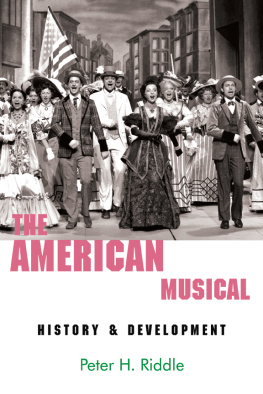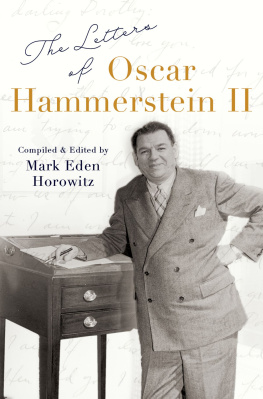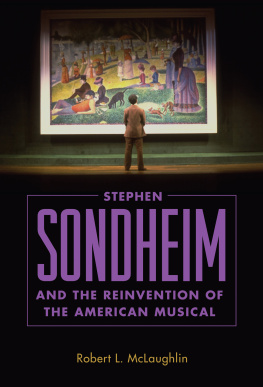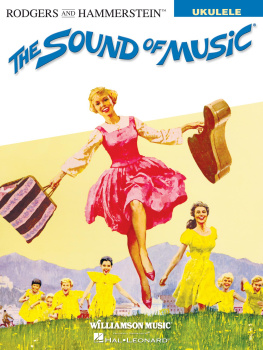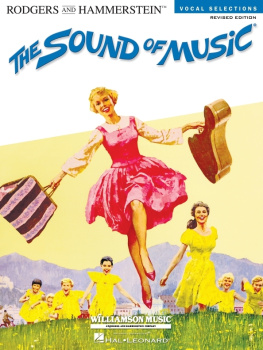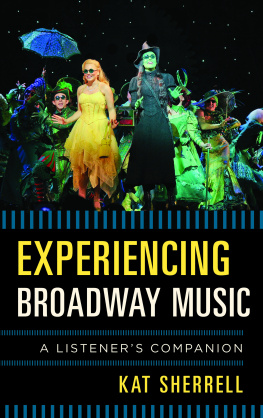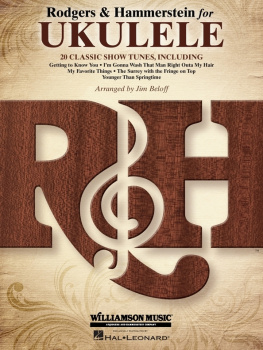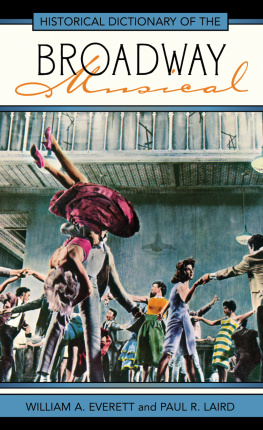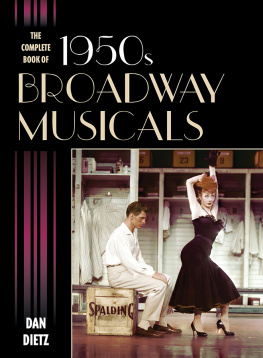Contents
Guide
Pagebreaks of the print version
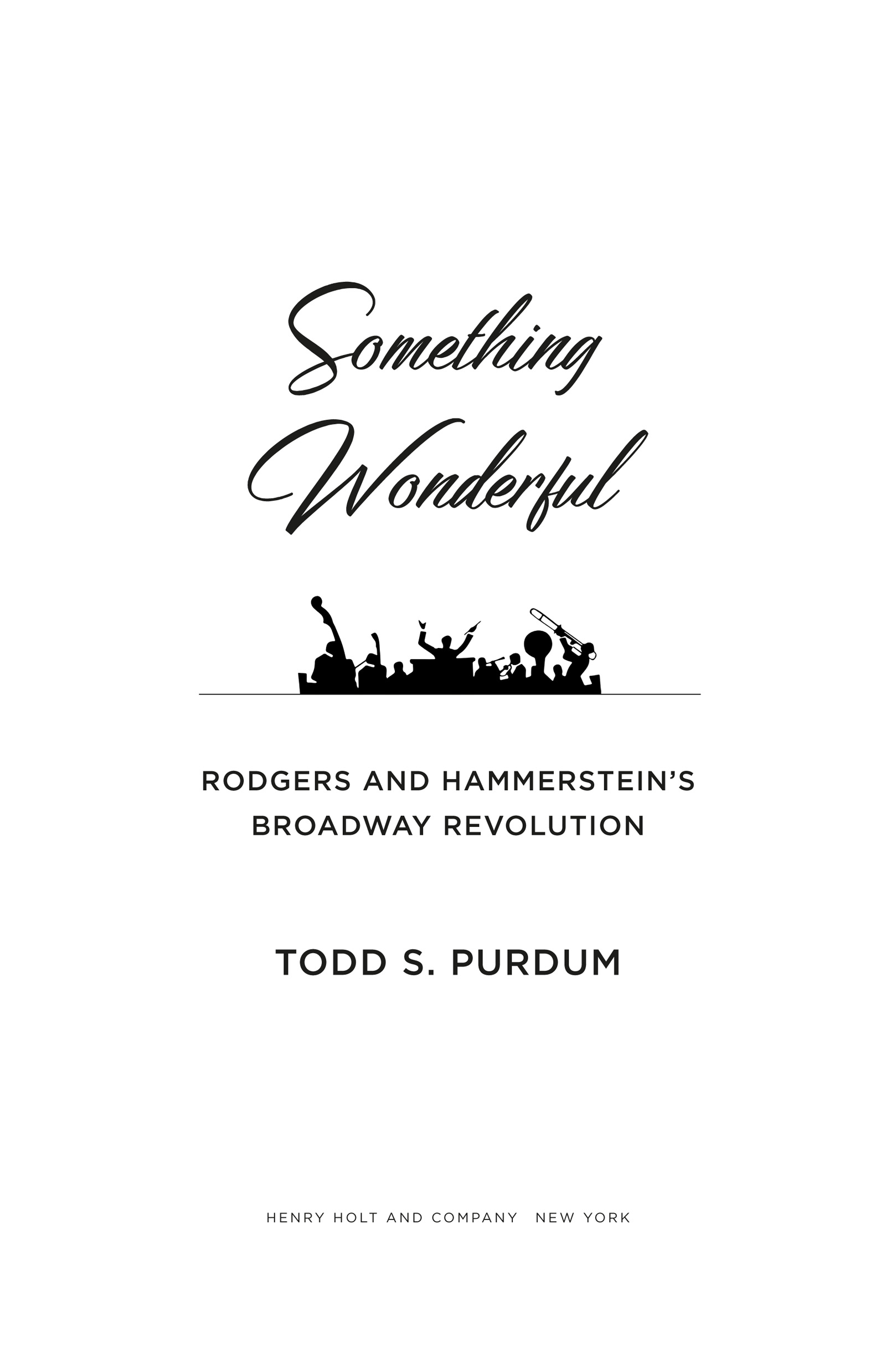
The author and publisher have provided this e-book to you for your personal use only. You may not make this e-book publicly available in any way. Copyright infringement is against the law. If you believe the copy of this e-book you are reading infringes on the authors copyright, please notify the publisher at: us.macmillanusa.com/piracy.
For my parents, who taught me these songs
And for Dee Dee, Kate, and Stephen, who make my heart sing them
At the stroke of 8:00 p.m. on the rainy Sunday evening of March 31, 1957, in a converted vaudeville house on Upper Broadway in Manhattan, timpani rolled, herald trumpets blared a fanfare, and soon a chorus sang out, The prince is giving a ball! The crowded old theater at the corner of West 81st Street was the CBS Television Networks smallest color studio, No. 72, but the program beaming live from its transmitters was being broadcast over the largest network ever assembled245 local stations from coast to coast, including twenty-nine in Canada. The network had bigger, better studios in Hollywood, but this one had been chosen for its proximity to New Yorks theater scene. For the real hosts of the evening were no mere princes, but the kings of Broadway themselves: Richard Rodgers and Oscar Hammerstein II, the reigning creators and impresarios of the modern musical theater, and two of the most influential producers of mass popular entertainment in Eisenhower-era America.
This evenings production was Cinderella , a ninety-minute original musical play created especially for television, and it found Rodgers and Hammerstein at the very height of their powers. With a budget of $385,000, a live orchestra of thirty-three pieces, and an all-star cast, Cinderella preempted The Ed Sullivan Show and General Electric Theater , two of the most popular programs of the day. Sponsored by Pepsi-Cola and the Shulton Company, makers of Old Spice toiletries, the special broadcast was ballyhooed in full-page newspaper advertisements across the country and promoted in more than a hundred announcements over CBS stations alone. Shulton had offered a portable television set, two clock radios, and ten recordings for those station managers who did the most to promote the show. Letters were sent to the principals of public schools, urging them to encourage their students to watch the program, and Kenyon & Eckhardt, Pepsis advertising agency, sponsored prizes for a letter-writing contest in which people were asked to nominate the nicest person I know or to suggest my wish for my town. Five million four-page color Cinderella comic books were printed for insertion into cartons of Pepsi, and a long-playing album of the shows score would be on sale from Columbia Records first thing Monday morning.
By now, this level of interest, attention, and dominance was par for the course for Rodgers and Hammerstein. After all, this was the team that had revolutionized the American musical theater, integrating song, story, and dance as never before with their blockbuster Oklahoma! in 1943, and then gone on to create the beloved and enduring hits Carousel , South Pacific , and The King and I a new show every other year for fourteen years and counting. Their songs, a bursting catalogue written for specific characters and dramatic situations in individual plays, had nevertheless produced a powerhouse lineup of popular hits, from People Will Say Were in Love, to Youll Never Walk Alone, to Getting to Know You, that had become part of the soundtrack, the background music, the very vernacular of America. The titles themselvesThere Is Nothin Like a Dame, Oh, What a Beautiful Mornin, I Whistle a Happy Tuneevoked the infectious, ebullient, can-do optimism of the era.
What is more, Rodgers and Hammerstein were also universally regarded by even their envious peers and competitors as perhaps the best (and richest) pair of businessmen in show businesswith their own music publishing house, sole ownership of their dramatic properties, and a casting and producing organization that held open auditions every Thursday morning to spot new talent and fill out long-running and touring productions of their shows. They had pioneered the practice of recording original cast albums of Broadway musicals and were the first to exploit lucrative merchandising tie-ins for their shows, with themed pajamas, dolls, and tropical fashions from South Pacific . Just three years earlier, in 1954, the General Foods Corporation had chosen to celebrate its twenty-fifth anniversary with an all-star tribute to Rodgers and Hammerstein, a program carried on all four extant television networks.
Now the boys were aiming even higher, bringing Cinderella to CBS in an effort to top NBCs highly successful live productions of a musical version of Peter Pan , starring Mary Martin, in 1955 and 1956. Their package deal with the network called for them to bear the above the board costs of the showthat is, talent, costumes, scenery, and so onwhile the network would pay for cameras, lights, sound, and technical equipment. Rodgers and Hammerstein would own the finished show outright, with an option for a single rebroadcast by CBS. And they had scored a casting coup: Julie Andrews, then the hottest star on Broadway, moonlighting from her role as Eliza Doolittle in My Fair Lady , to play Cinderella.
Rodgers and Hammerstein had first met Andrews two years earlier, when she auditioned for a role in what turned out to be their biggest commercial and critical flop, Pipe Dream , a musical set among the raffish characters of John Steinbecks Cannery Row. Rodgers had sarcastically pronounced her singing absolutely adequate, and asked if she was up for other parts. She had replied that Frederick Loewe and Alan Jay Lerner had approached her about a musical version of George Bernard Shaws Pygmalion , which they would in fact transform into My Fair Lady . So now a happy reunion was possible, and Andrews managed to squeeze rehearsals for Cinderella into her days and afternoons off. The creative team rounded out the cast with a roster of some of Broadways most reliable names: Howard Lindsay, the co-author and co-star of Life with Father (to this day the longest-running nonmusical play in Broadway history) and his wife, Dorothy Stickney, as the king and queen; Edie Adams, fresh from her triumph as Daisy Mae in Lil Abner , as the fairy godmother; the comediennes Kaye Ballard and Alice Ghostley as the stepsisters; Ilka Chase as the stepmother; and an unknown newcomer named Jon Cypher as the prince. (The production floor manager was also just getting his start in show business, but he would go on to big things: Joseph Papp, founder of the New York Shakespeare Festival and the Public Theater.)
Hammerstein, who wrote the libretto, had kept the Cinderella story simple and sweet: no modern touches, no anachronistic interpolations, no wised-up twentieth-century idioms. But the logistical demands of the production were daunting. Studio 72, a former Keith-Albee-Orpheum vaudeville house and later a movie theater, was a cramped space of just forty-two hundred square feet whose orchestra seats had been removed and filled in with concrete to make a level playing surface with the stage. Into this shoe box would have to be fit at least seven sets (of necessity, vertical ones) in tones of lavender and chartreuse, bulky color cameras, dressing areas for men and women, and a walled-off echo chamber for an orchestra that included violins, various woodwinds, horns, and a harp. I just thought it was going to be the greatest train wreck in the history of show business, Adams would recall.








